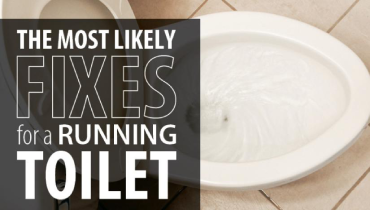
A running toilet can waste water and increase utility bills. Rainbow Restoration highlights some common fixes.
|
You’ve probably heard this king of corny jokes: “Is your refrigerator running? You’d better go catch it!” However, what about your toilet running? This is no joke! Luckily, there are some relatively simple fixes you can do yourself. Check out these DIY instructions for addressing some of the more common causes of a running toilet.
Flapper
Your toilet’s flapper, or its flush valve seal, is the rubber piece that plugs the drain hole on the bottom of your toilet tank and holds back tank water for the next time you flush. Defective flappers are a very common cause of a running toilet. Over time, flappers deteriorate, allowing for water to pass through. They can also break, warp or get dirty
If you decide you need to replace your flapper, this is an easy running toilet fix! Flappers are inexpensive and will pop right on the flapper chain. When purchasing a new flapper, be sure it attaches to the chain at the center of the flapper and not the outer edge. This way, you’ll prevent unwanted warping.
Flapper Chain
The chain connected to your flapper is crucial in preventing your toilet from running incessantly. A tangled chain won’t allow your toilet’s flapper to close and water will continue to run into the bowl. A chain that’s too long or too short won’t work either. If the chain is too long, it will interfere with the flapper closing, causing it to constantly run. In addition, your flush will not be very strong
Ideally, your chain should have about an inch of slack – more than an inch and your chain will tangle. To achieve this, you may cut the chain, move the clip down to reduce its length, or purchase a new chain altogether. Some chains come with floaters, and if yours does, ensure it’s not pulling up on the flapper by moving the float up the chain so it sits comfortably on the tank water surface.
Float
The float is the plastic balloon that tells your toilet when the tank is full. Your toilet has one of two types of floats: a ball float or a cup float. If your float is set too high, water levels will rise above the overflow pipe and the tank won’t stop running.
If you have a ball float, simply bend the arm down so it sits lower. For cup floats, slide the float down the central tube.
If you experience a flood, be sure to contact the professionals at Rainbow Restoration for immediate water remediation.
